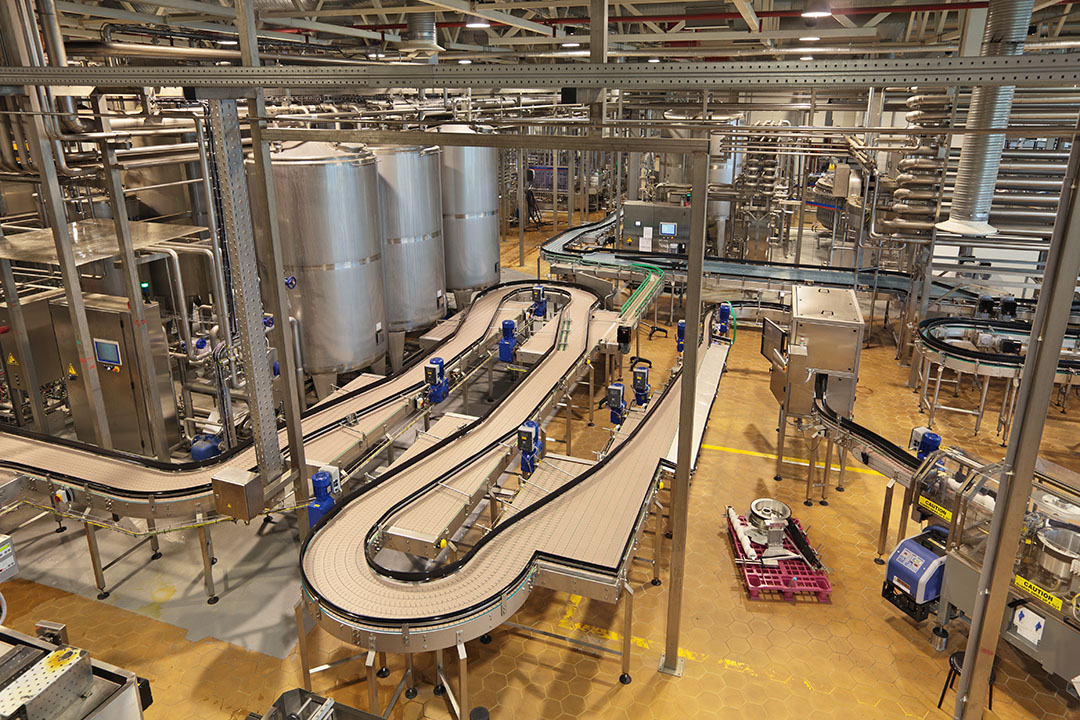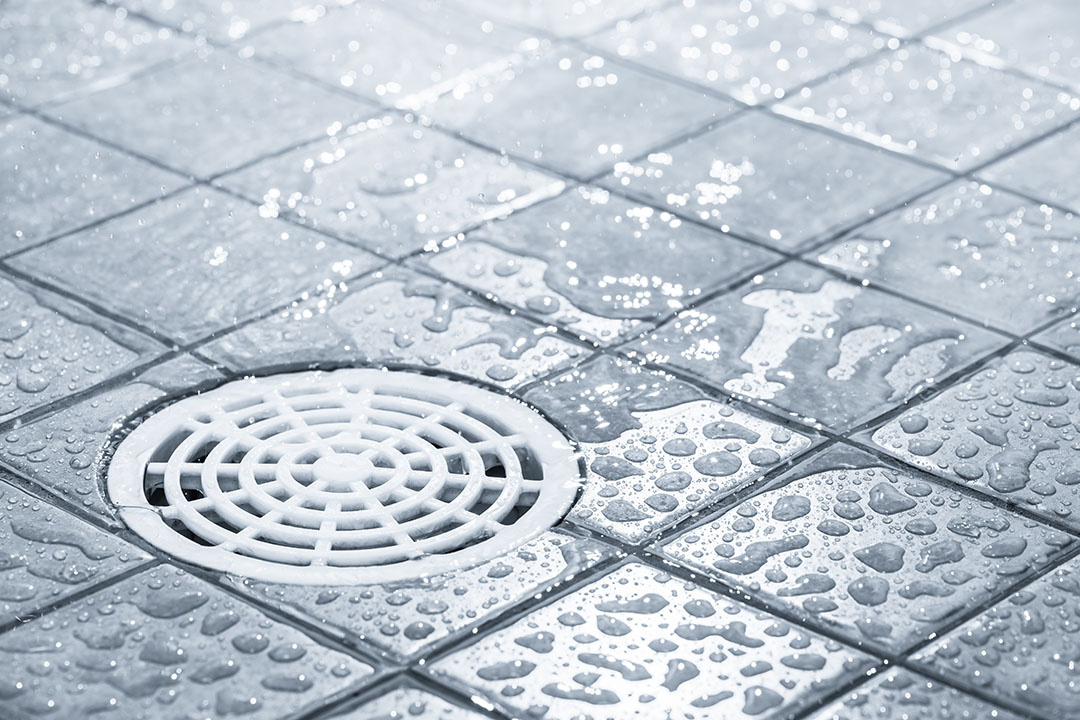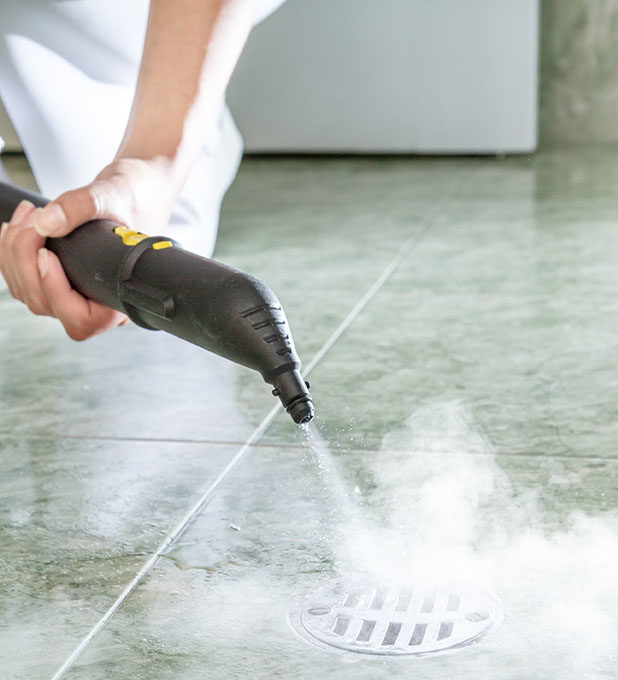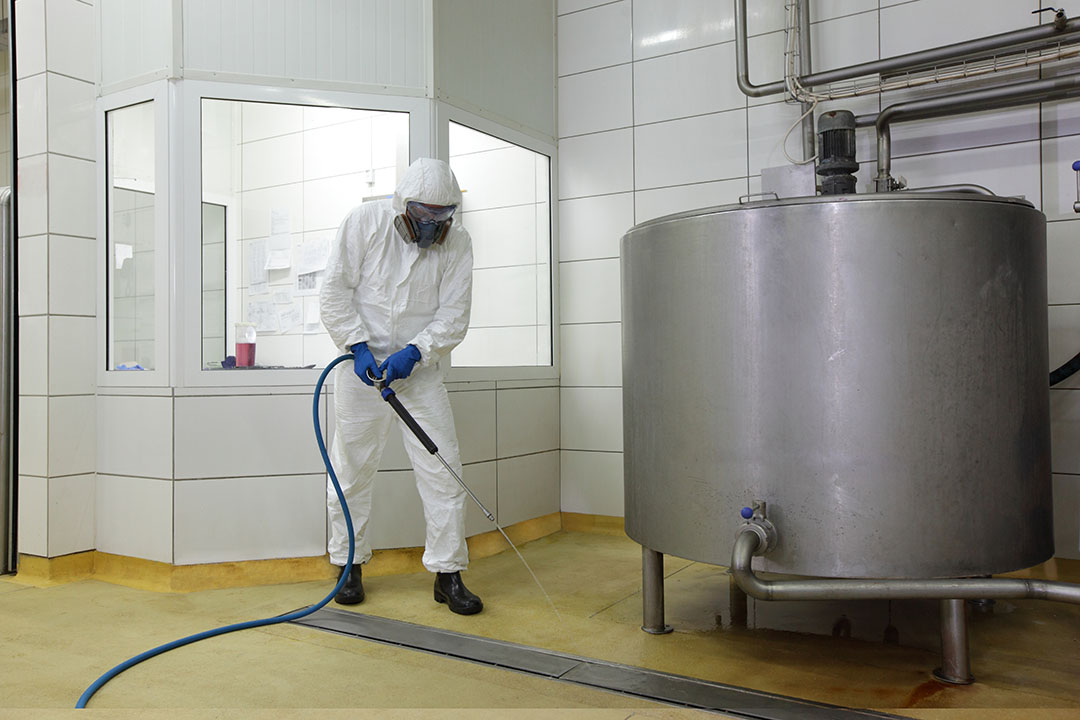
How to Clean and Sanitize Floors and Drains
You should train your employees to never use vigorous scrubbing or high-pressure rinses when cleaning floors and drains. These approaches can stir up contaminants, which then become aerosolized. These contaminants can enter food products and even travel throughout your facility through the HVAC system.
When drafting your facility’s cleaning guidelines, you should consider the types of flooring in your facility, what types of contamination are of particular concern, and the equipment that your facility has. Generally, to clean floors, employees should:
- Pick up loose debris with a broom or shovel
- Wet the floor with low-pressure water
- Apply a cleaning solution
- If required, mop the cleaning solution
- Rinse the floor with low-pressure water and remove excess water
- Apply sanitizer
Ideally, your facility should use foam-based or other no-touch cleaners for both drains and floors. No-touch cleaners eliminate the risk of aerosolizing contaminants during mopping or scrubbing procedures. To clean drains, your employees should:
- Remove the drain cover, strainers, and quat block
- Scoop out any debris
- Clean drain covers and strainers according to facility policy
- Pre-rinse the drain with low-pressure warm water
- Apply a foam or detergent cleaner in and around the water
- If required, scrub using a designated drain brush
- Rinse the drain with low-pressure water
- Flood the drain with a sanitizing solution
- Replace the quat block, strainer, and drain cover
- Clean, dry, and sanitize and tools used
To ensure that all floors and drains are being adequately sanitized, employees should regularly check the pH and temperature levels of sanitizing solutions. Specially trained employees can swab drains for Listeria monocytogenes and other harmful microorganisms.
Summary
Floors and drains are a common source of contamination in food processing and manufacturing plants. To prevent contamination from floors and drains from getting into your food products, it’s essential to train all employees on proper cleaning and sanitizing procedures. Floors and drains should never be cleaned using vigorous scrubbing or high-pressure rinses, as these approaches can aerosolize contaminants and spread them throughout your facility. When possible, you should use no-touch cleaning solutions to further reduce the risk of aerosolization.
For further information, see the following links:
- Bacterial diversity of floor drain biofilms and drain waters in a Listeria monocytogenes contaminated food processing environment.
- Sanitation Best Practices
SafetySkills covers these topics and more in our Floor and Drain Cleaning in Food Manufacturing course. For more information, click here.
Interested in our Food Safety Courses? Schedule a free demo!




